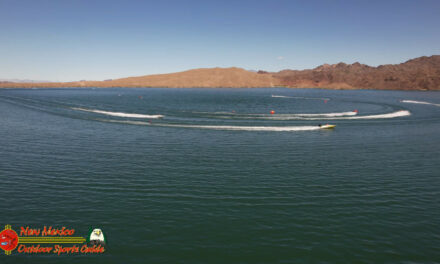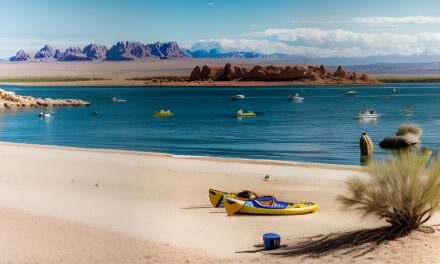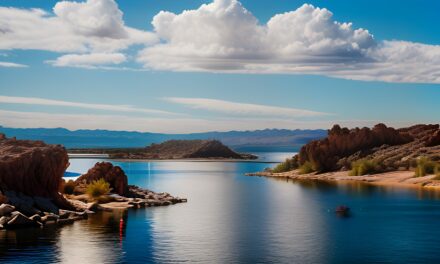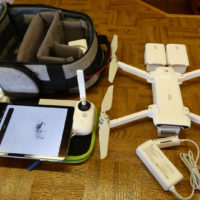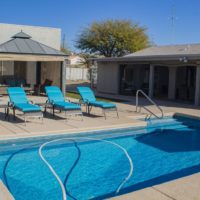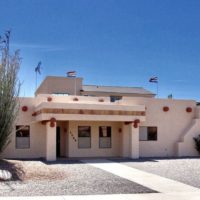When It Rains, It Pours — Texas’ natural resources showed their potential in 2004, thanks to higher than normal rainfall across most of the state. The abundance of water created lush habitat conditions, setting the stage for near-record production among many wildlife species, particularly quail and deer. While hunters were enjoying the rewards of a bountiful season, anglers and park visitors saw newfound opportunities as rivers and streams flowed again and lakes, like Falcon, returned to normal levels.
Rare Species Rebound — Several high-profile species of concern passed milestones in 2004, including record highs for whooping cranes and Kemp’s ridley sea turtles. This winter, the world’s last natural wild population of whooping cranes flew past the 200 mark, a landmark event for an endangered bird species that has come back from the brink of extinction during the past six decades. Throughout the summer of 2004, the world’s most endangered sea turtle returned to nest on Texas beaches in record numbers. Forty-one Kemp’s ridley nests were reported. Also encouraging was the change in status of the black-tailed prairie dog, which was removed from the candidate list of species considered for threatened status under the Endangered Species Act.
Producing and Paying for Fish — The process to build and finance a new state fish hatchery got under way in 2004, with Jasper getting the nod as the site for the facility. To help pay for the new hatchery, the Texas Legislature created a Freshwater Fishing Stamp, providing the Texas Parks and Wildlife Department with an opportunity to reposition its suite of hunting and fishing licenses. The agency eliminated requirements for several specialty stamps and created license packages that better reflect a user-pay, user-benefit philosophy. Also making a big “splash” in a state fish hatchery this year was the donation of a new state record blue catfish to the Texas Freshwater Fisheries Center in Athens. The 121-pound behemoth was transported alive to the TFFC where it continues to be on display to the public in the facility’s aquarium.
New State Parks Pass Proves Popular — More than 50,000 state park fans have purchased the new Texas State Parks Pass that went on sale Jan. 1. The new annual pass is similar in appearance to a credit card and is designed to be easier to use. The Texas State Parks Pass costs $60 for one card and $75 for a two card family membership. It replaced the gold Texas Conservation Passport. The new pass provides free entry to all state parks and historic sites for members and their guests, camping discounts and “extra perks.”
Birds Take Center Stage — The long-awaited debut in the Lower Rio Grande Valley of the $7 million World Birding Center drew dignitaries from state and local governmental entities and interested ‚birders‛ to the Oct. 23-24 grand opening. The WBC headquarters in Mission becomes the second of eight sites to open along the Texas-Mexico border from Roma to South Padre Island. Another first in the Texas birding community also came along in 2004 with the inclusion of a blind and visually-impaired birding category in the 8th annual Great Texas Birding Classic’s team competition, which was held in April along the central and upper Texas coast. The groups identify birds by sound instead of sight. The España Tweetybirds beat out two other teams in the category by identifying 40 species. A Texas birding team and a team of young birders from Illinois, Maryland, Michigan and New York tied for first, identifying 359 bird species. A total of 56 teams competed. Winning teams were awarded a total of $51,000 that they then donated to fund Texas coastal conservation habitat projects to benefit birds and birders.
Golden Alga Spreads — A naturally-occurring toxin that has become deadly to fish in North and Central Texas expanded its range in 2004, hitting Lake Texoma, one of the states’ biggest lakes, and spreading into Oklahoma. Resource conservation agencies from Texas and Oklahoma are now combining efforts to research and monitor golden alga there. Since 2001, golden alga fish kills have occurred at two dozen reservoirs in Texas.
Bighorn Sheep Hunt Giveaway Signals Species Comeback — Coincidentally, a pair of firefighters from different parts of the state were selected in a drawing of all licensed hunters in Texas to receive a complimentary desert bighorn sheep hunt. TPWD sheep census surveys in 2004 indicated record-high populations of desert bighorns and, in a gesture of appreciation to hunters whose license dollars have helped restore this majestic big game animal, the agency decided to give two hunts away.
Justice Served for Nature — A decades old legal dispute was finally resolved bya mitigation settlement. The case stemmed from mercury discharge into Lavaca Bay by Alcoa and a sister company. Alcoa has already spent $40 million and will spend another $11 million for remaining cleanup. The company will also compensate the public for lost ecological and recreational resources, including adding land to a national wildlife refuge, restoring marshes, creating a new oyster reef and funding a series of fishing piers and boat docks around the bay. Earlier in the year, four individuals who wounded and killed several state-protected trumpeter swans were brought to justice after an extensive and exhausting investigation by state game wardens. Three of the five swans, which are a protected migratory non-game species, died and the other two are being cared for at an Iowa rehabilitation facility. The poachers involved pled guilty to 20 various game law violations and were assessed more than $17,000 in fines and related costs.
San Jacinto Battleground Artifacts Uncovered — An unprecedented archeological project under way at the San Jacinto Battleground State Historic Site near LaPorte led to the discovery of dozens of battle artifacts such as musket balls, belt buckles and Mexican coins. A display of some of the discoveries, which already are shedding new light on the decisive 1836 battle that led to Texas’ independence from Mexico, highlighted the annual San Jacinto Symposium held at the University of Houston April 23. The archeological project is the precursor to the implementation of the first part of a $47 million master plan for the park, which calls for restoring the battleground to its 1836 appearance, a new Visitor’s Center and Museum, among other improvements. – Lake Havasu
– Lake Havasu



